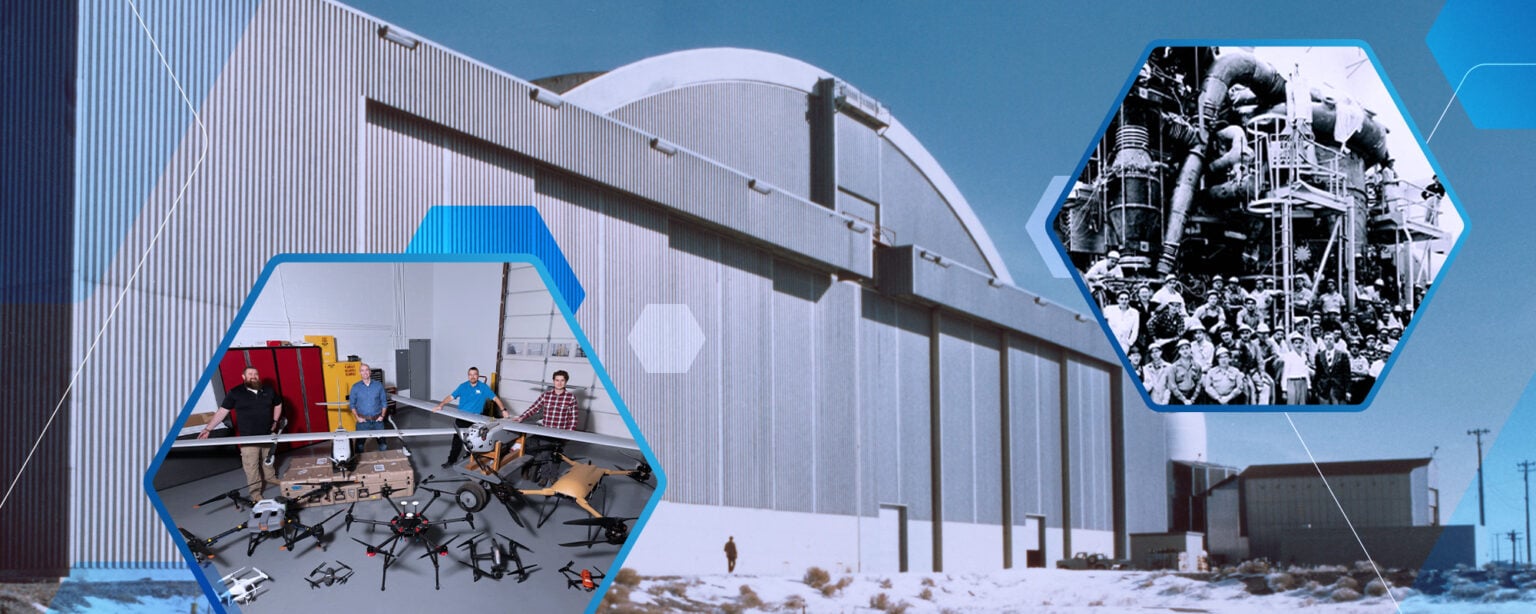Matthew Balderree first encountered drones in 2004 as a technical sergeant in the U.S. Air Force working with an early warning and airspace management radar system in Iraq.
For Balderree, that airspace included predator drones, unmanned aircrafts used in numerous military conflicts starting in 1995. In the Air Force, new technology wasn’t always user friendly, and it often required expensive contractors to fix.
Now, as Idaho National Laboratory’s (INL) chief Unmanned Aerial Systems (UAS) pilot and research lead, Balderree is helping develop and test cutting-edge military and Homeland Security drone technology at the lab’s 890-square-mile desert Site.
“What I love about my job is that we’re making sure that the equipment is functional, easy to use and not burdensome to those who are using it,” he said.
The government has relied on INL’s UAS program to test new drone platforms and evaluate sensor packages to meet federal missions for more than two decades.
But the drone program is only a small piece of the lab’s aviation history. While INL is synonymous with nuclear energy, the Site’s aviation story predates the construction of any nuclear facilities in the Idaho desert.
World War II bombers
Starting in the 1940s, the Site served as the Arco Naval Proving Grounds, where guns from ships like the USS Missouri and USS Wisconsin were test-fired for accuracy after being refurbished in nearby Pocatello, Idaho.
But the Navy wasn’t the only military branch lobbing bombs and artillery at the Eastern Idaho sagebrush. During World War II, more than 40,000 pilots trained at the Pocatello Army Air Base, including day and night training missions over the Arco High Altitude Bombing Range and the Twin Buttes Bombing Range.
On Jan. 8, 1944, one of those bombing runs ended in tragedy when a B-24 bomber crashed just north of West Twin Butte during a training mission. Sheepherders on the base of the butte told investigators they saw the plane trying to get altitude but spinning at 500 feet then crashing into the ground and exploding.
The crash killed seven crew members, including Sgt. George H. Pearce, Jr.
Seventy years after the accident, Pocatello historian Marc McDonald rediscovered the crash site. Two years later, Pearce’s family, including his daughter, Nancy Gavalis of Bristol, New Hampshire, laid a commemorative plaque where Pearce lost his life.
Nuclear flight
Five years after the B-24 crash, the U.S. Atomic Energy Commission established the National Reactor Testing Station at the Arco Naval Proving Grounds. There, the commission tasked engineers with harnessing the power of fission for peaceful purposes, namely generating electricity.
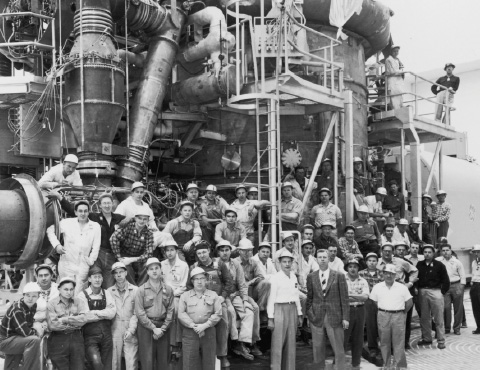
Soon, the Air Force lobbied for the Aircraft Nuclear Propulsion program, and General Electric was contracted to design and build a reactor at the Site. By 1956, the effort resulted in the Heat Transfer Reactor Experiment-One, a water-moderated reactor attached to a modified J47 turbojet engine. The 80-ton assembly moved about the desert on railroad tracks.
By 1959, the Air Force had finished a 74,880-square-foot hangar called Test Area North 629 fit for a 600,000-pound, 205-foot-long nuclear-powered aircraft.
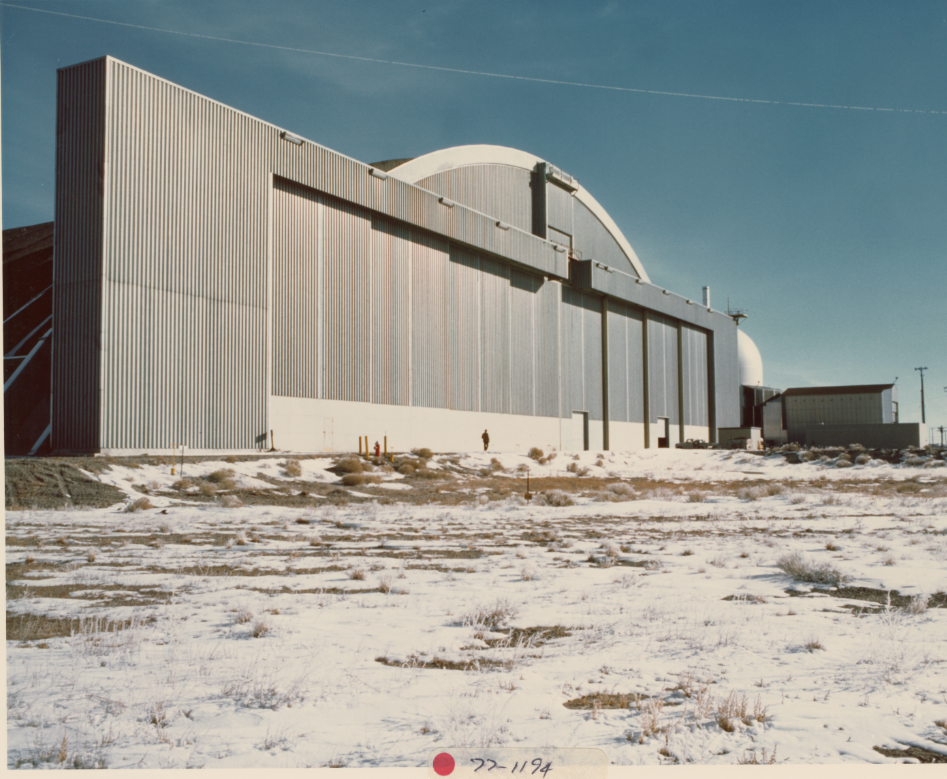
The Air Force even drew up a recommended menu for a continuous five-day flight — a theoretical reconnaissance mission or bombing run over Russia. On the final day of the mission, breakfast would have included pineapple juice, Spanish omelet, sausage, sweet roll and coffee, tea or cocoa.
The reactor experiment was eventually followed by two more. In December of 1960, the third one powered two turbojet engines at a temperature of 2,000 degrees Fahrenheit.
But, after roughly a decade and $1 billion, the dream of nuclear-powered flight ended when President John F. Kennedy canceled the project in 1961.
The second and third reactor experiments remain on display outside the Experimental Breeder Reactor-I museum. The Test Area North 629 hangar now houses part of INL’s Specific Manufacturing Capability facility, where armor for the U.S. Army’s Abrams battle tank is manufactured.
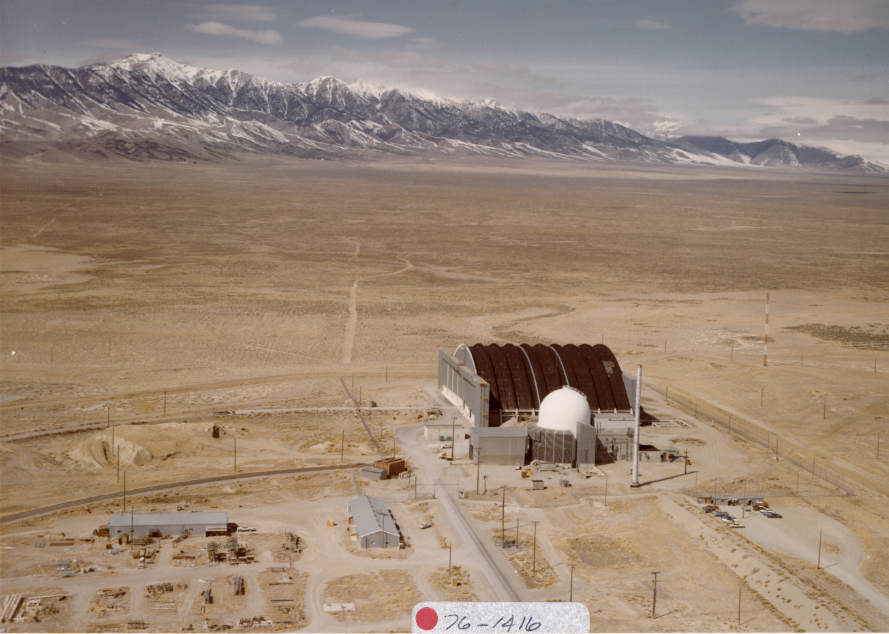
Unmanned Aerial Systems
If B-24 bombers and nuclear-powered jet engines were state-of-the-art during their heyday, the advent of drones is arguably the most important advancement in aviation during the last 20 years.
The UAS initiative at INL began in 2000 as part of the unmanned vehicle systems effort. The original objective was to advance technologies for using UAS in autonomous characterizing, mapping, navigation and communications in hazardous environments.
Early efforts focused on using multiple sensors on the aerial platform to improve navigation and flight stability. Using radio-controlled airplane kits procured from a local hobby store, INL Robotics Team members Matthew Anderson, Mark McKay and Derek Wadsworth, who now manages the UAS program, developed and deployed a GPS-way point navigation system on a small UAS. This system resulted in successful control and navigation of the UAS.
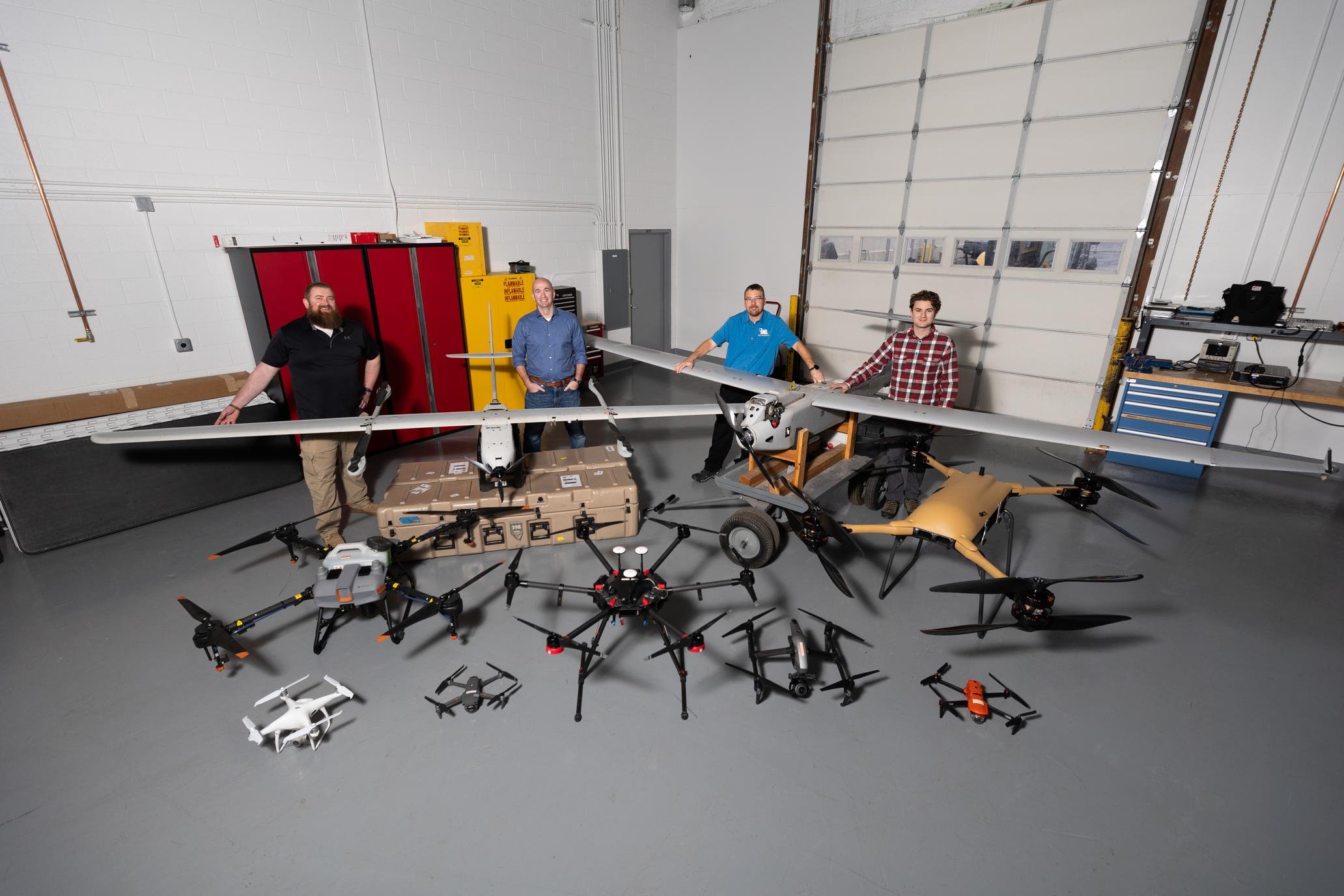
The UAS effort became a significant program at INL in 2012 when Wadsworth secured a contract with the U.S. Air Force test small radios, developed by private industry, that provided secure communications with ground forces. This venture into Department of Defense UAS programs led to sponsorships from the Army, Navy, Air Force, Marines and Coast Guard.
Through INL’s UAS program, the Site was one of the first places, aside from military bases, authorized to fly unmanned aerial systems under a Federal Aviation Administration (FAA) Certificate of Authorization.
The certificate allows researchers to test drones heavier than the FAA’s 55-pound weight limit and above its 400-foot altitude limit for civilian unmanned aerial systems.
For the most part, that means the UAS team can perform its duties without the restrictions encountered outside the Site. The team makes special allowances to protect the environment, including timing and routing its flights to avoid sensitive wildlife, such as sage grouse.
In addition to the Site’s vast airspace, the UAS program benefits from INL’s Wireless Test Bed, a large-scale, open air, controlled range for testing and demonstrating full-scale wireless systems.
“There’s a lot that we couldn’t do without the Wireless Test Bed,” Balderree said. “For the past seven to eight years, a primary function of our program has been testing and validation for various types of drone communication systems. It’s a huge capability for us. Without it we would be severely limited.”
In addition to communication systems, the team has tested dozens of cutting-edge technologies and procedures for the U.S. government, especially the military.
Those technologies include the first Piccolo Autopilot System, one of the most trusted and deployed drone autopilots. At INL, the Piccolo system was initially tested on the Arcturus T-15, a fixed wing drone designed for border protection, aerial mapping, search and rescue, and defense.
The frontier of modern aviation
Today, one focus of the UAS team is exploring how to stop adversaries from using drones to harm U.S. interests at home and abroad. That work includes developing and testing ways to protect critical infrastructure, such as nuclear facilities, dams, electrical substations and gas pipelines from drone attacks.
On the battlefield, researchers look at ways to protect troops from military-grade surveillance and combat drones and civilian drones modified to fly improvised explosive devices.
“At the (INL’s) Explosives Test Range, we have the ability to carry 20 pounds of explosives on a drone,” Balderree said. “We’re looking at how to help soldiers detect them and protect themselves.”
One of those efforts is developing new camouflage patterns for troops on the ground. “We bring the drones in from a distance and test how hard it is to see the soldiers,” Balderree said. “We also test whether it’s better for a soldier who hears a drone to keep walking, stop, take a knee or lay prone.”
In collaboration with experts at INL’s Radiological Response Test Range, the UAS team tests the effects of radiological disbursal from a dirty bomb detonated onboard a drone.
“We’re one of the only places in the world where you map radioactive dispersal from a live detonation,” Balderree said. “The material itself only has a half-life of 35 hours, so after two weeks it returns to background radiation. It’s like nothing ever happened.”
Exploring the frontier of modern aviation
It’s no exaggeration to say that Balderree and his colleagues in INL’s UAS program — including Wadsworth and pilot-engineers Michael Shurtliff, Shaun Evans and Avery Mayfield — are exploring the frontier of modern aviation.
From the early days of predator drones, unmanned aerial systems are now ubiquitous in military and civilian life.
Today, they play an outsized role in the modern battlefield for intelligence gathering, communication and combat.
At home, drones have revolutionized fields such as photography and wildlife biology. Now, private companies are starting to use drones to deliver pizza and toilet paper to a customer’s doorstep.
“It’s fun and it’s neat but, more importantly, it’s the future of warfare and the future of what we will see in our everyday lives,” Balderree said.
The Site’s special characteristics — its vast size, wide open spaces and sparse population — have made it a prime destination for today’s UAS program and other aviation-oriented national security missions for more than 80 years.

